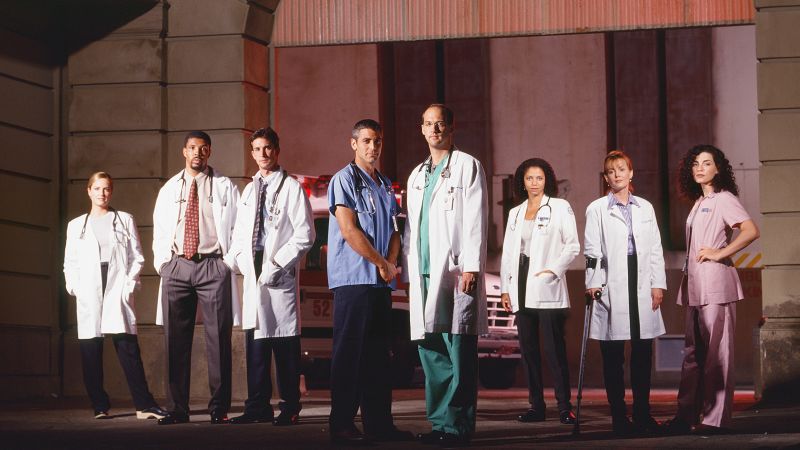**Revisiting the Legacy of “ER”**
In May 2019, I experienced a nostalgic awakening, sparked by a television series that had once caught my young, inquisitive gaze. It was George Clooney, the TV heartthrob, performing a heroic rescue in “ER,” which made a significant impression on my impressionable eight-year-old self. At that moment, I understood two essential truths: my heterosexuality and the production quality of “ER.” Years have passed since then, yet both realizations still hold firm in my beliefs today.
Fast forward to a few years later; I decided to revisit the revered 15 seasons of “ER,” marking the start of my journey of 331 episodes shortly after it was released on Hulu. The motivation behind this audacious rewatch? The anticipation accompanying “The Pitt”—a new medical drama that also stems from the brilliant mind of “ER” executive producer John Wells, featuring Noah Wyle. With connections to Warner Bros. Television, which is, interestingly enough, affiliated with the same parent company as CNN, this decision felt all the more poignant.
As fans of medical dramas know, “ER” stands as a cornerstone in television history, often considered a guiding light for quality storytelling. Recent statistics illuminate its relevance; since arriving on Hulu, nearly 100,000 viewers have binged the complete series. Astonishingly, about two-thirds of these viewers are women, while half belong to the under-34 age bracket. Particularly striking was a detail shared by a service representative: the average age of “ER” binge-watchers is just 27, indicating that most were merely toddlers when the show debuted back in September 1994. This resurgence indicates one clear truth: “ER” has aged gracefully.
Though the show is not devoid of flaws—significant issues such as the portrayal of transgender patients sometimes fell short, and efforts to incorporate minority experiences occasionally missed their mark—it has demonstrated remarkable adaptability. Throughout its run, “ER” tackled significant social issues—from addiction and AIDS to post-traumatic stress and LGBT rights—often bringing these themes to light long before they became prominent in television discourse.
Actress Laura Innes, who portrayed Dr. Kerry Weaver, remarked in a 2007 interview regarding her character’s same-sex relationship that there was a lack of acknowledgment for the groundbreaking nature of this representation at the time. It was indeed a bold and progressive move for a mainstream show in the early 2000s. The courage of “ER,” in these respects, became a defining trait.
One of the defining elements of “ER” lies in its treatment of mortality and human connection. The series often delved into the value of life, epitomized by Dr. Mark Greene’s character arc, magnificently played by Anthony Edwards. Greene’s devastating journey through profound loss and professional challenges captures the essence of what the series sought to convey. His eventual fate, succumbing to a brain tumor in a gut-wrenching episode, exemplifies the show’s capacity to evoke deep emotional reflections about life and loss. Like many viewers, I felt personally confronted by the episode’s themes, especially during a pivotal moment in my own life.
Revisiting this poignant narrative after the unexpected passing of my father shaped my viewing experience. It allowed me to verbalize emotions I had struggled to articulate. Watching Greene’s struggle and ultimate acceptance of mortality became a cathartic journey—a pathway for healing through shared narrative and experience.
Despite fluctuations in character focus and narrative strength over 15 seasons, notably during Wyle’s reduced involvement, the series ultimately regained its footing by introducing new, invigorating characters that helped revitalize its storytelling. The concluding season was particularly cherished for reuniting beloved characters, providing a sense of nostalgia as the series brought its narrative full circle during its swan song.
In its final moments, “ER” reiterated a fundamental belief: life and death are inextricably linked. The series’ closing scenes—alluding to ongoing struggles and new beginnings—embodied a vision of hope and continuity. Even now, a rewatch of the series reminds us that life is precious and worth celebrating despite its inevitable conclusion.
In this digital age, platforms like Hulu grant us unlimited access to relive the moments and triumphs of County General Hospital. The show, while concluded, endures both in legacy and impact.











